Johnny Johnson's Spitfire IXc EN398
Had not the RAF been able to bring a new Spitfire into combat in the summer of 1942 to face the Fw-190A that could outfly the Spitfire V on every point but turning circle, the war over Northern Europe would have likely taken a different course.
As it was, the RAF had to stop daylight operations over northern France twice - in November -December 1941 and in March-April 1942 - due to high losses of Spitfires operating against JG 2 and JG 26 on the Channel Front. The new Merlin 61-powered Spitfire VII and VIII with their 2-stage superchargers could match the Fw-190's performance, but were at least a year away from production.
As a "stopgap," two Spitfire Vc airframes, AB196 and AB197, were given strengthened longerons and Merlin 61s with 2-stage superchargers were mounted. AB196 first flew on February 26, with AB197 taking to the air a month later. Both were successful and on the strength of these results the Spitfire IX was ordered into production at Castle Bromwich immediately.
Even given top priority, the Spitfire IX did not fully equip all RAF fighter squadrons in the UK until late 1943. The "interim" Mk.IX became the second most-produced Spitfire, running close behind the Spitfire V, itself an "interim" engine upgrade of the Spitfire I, and gave the RAF parity with the best German equipment. As leading Spitfire IX ace Johnny Johnson noted in his autobiography, "Wing Leader," the Spitfire IX and the Fw-190A were so closely-similar in performance that the outcome of a fight was a matter of pilot ability.
Johnny Johnson and Spitfire IXc EN398:
Having flown operations from the spring of 1941 to the fall of 1942, Squadron Leader J.E. "Johnny" Johnson was taken off operations after serving as Officer Commanding 610 Squadron during the summer and early fall of 1942. In January 1943, he was promoted to Wing Commander and assigned command of the Canadian 144 Wing, newly-equipped with the Spitfire IX. Offered his choice of airplanes, he took EN398, a Spitfire IXc that had previously been flown by 403 Squadron, following a 50 minute test flight on March 22, 1943.
One of the first items Johnson set about changing was the wing's tactical approach, forcing them to abandon the line-astern formation for the finger-four formation. He also avoided whenever possible taking on any Rhubarb missions involving low-level strafing. As the American Eighth Air Force began to expand operations over western Europe beginning in May 1943, 144 Wing was one of many RAF wings that provided penetration and withdrawal support for the B-17s and B-24s over France.
During Ramrod 49 on May 8, Johnson destroyed an Fw 190 for his eighth victory. The spring of 1943 proved busy: Johnson claimed three Fw-190s damaged two days later. On May 11 and 13 he destroyed two more Fw-190s to reach a score of 10, sharing another Fw-190 on May 13 and a Bf-109G on June 1. He scored five further victories over Fw-190s during June, with two claimed on June 15. On June 17, he shot down Unteroffizier Gunther Freitag of 8./JG 26 over Calais in a fight with III Gruppe led by Wilhelm-Ferdinand Galland. Fw-190s claimed on June 24 and 27 brought his score to 15.
July 1943 saw the Eighth Air Force begin Blitz Week, a concentrated effort against German targets. While escorting American bombers during these missions, Johnson destroyed three Bf 109Gs and damaged another, the last being shot down on July 30 at the end of the American campaign, bringing his score to 18.
Surprisingly, Fighter Command still did not have a standard formation, which meant that Johnson's use of the finger-four made 144 Wing distinct in the air, earning them the nickname "Wolfpack," a name kept until July 1944 when 144 Wing was renamed 127 Wing upon its move to Normandy.
Johnson scored two more Fw-190s on August 23 and 26, and a third on September 4, bringing his score to 21. All of his combat during this tour as Wing Commander was against JG 26, one of the top fighter wings of the Luftwaffe, during the period when the JagdGeschwadeer was considered to be at the top of its achievement. Johnson was taken off operations at the end of September and assigned to Fighter Command staff.
Johnson's 14 victories while flying EN398 make this particular Spitfire the top-scoring RAF Spitfire of the war.
Eduard's "Weekend Edition" Spitfire IXc differs from the previous Profipack releases in that it does not have any photoetch, and only one decal option. In this particular release, that is of a Spitfire IXc flown by the 31st Fighter Group during the Sicilian and early Italian campaigns. The decal sheet does not include the extensive stencilling and wingwalk markings of the Spitfire, though it does include an instrument panel decal that looks appropriate when applied over the kit instrument panel.
The one thing a modeler must be aware of with this kit in any of its iterations is that assembly of the parts is very precise. All sprue gate attachments must be thoroughly removed, and it is a good idea not to paint surfaces that will be later joined together, due to the fact that even a coat of paint can change the dimensions such that the precise fit will not be achieved. If you do this, you will only need to use a very little bit of seam filler on the upper cowling where the two halves are joined (why Eduard did not make this one part, which would be easy, is beyond me).
I've said it before and will say it again here: the the Eduard Spitfires are over-engineered, as are most recent Eduard releases. In addition to the two part upper cowling, there is the problem of getting the exhausts fitted, something that has to be done before further assembly and painting. The logic behind this choice completely escapes me. The wheel wells are also needlessly complicated; the wheel wells of the new Airfix Spitfire V, which come in a whole two parts for each wheel well, look exactly the same as these eight-parts-each wheel wells from Eduard, once assembled. This is proof to me of the kit being over-engineered. However if you take your time, all of this can be successfully brought together.
Due to the lack of photo-etch, I made the seatbelts from my rapidly-declining collection of old wine bottle lead foil. (The modern stuff doesn't work, don't waste time collecting it.)
After pre-shading the model, I used Tamiya RAF Ocean Grey, RAF Dark Green and RAF Sea Grey Medium, applied freehand, to do the camouflage pattern scheme associated with Castle Bromwich-built Spitfires.
I used the stencil decals from a Lifelike Decals sheet, and the decals from the Victory Decals "Spitfire: Aces of the Empire" to do Johnson's famous EN398. These are all excellent decals that performed without problems.
I unmasked the canopy and installed the sliding portion in the open position., then attached the main gear and prop.
There are those who claim that EN398 has been "done to death," and there are grounds for such an argument. However, there are good grounds for doing the airplane that became the most successful individual Spitfire of the war, as it was when flown by the leading RAF ace at the time where he finally brought together all the skills he had been learning over the previous two years of battle.
Despite my statements about over-engineering, the fact is that the Eduard Spitfire IX series are the best Spitfire IX kits out there, in a size and price range that most modelers can afford to purchase and display. The Weekend kits are good value for money and anyone with a decal dungeon worthy of the name will have no trouble making up for the paucity of markings.
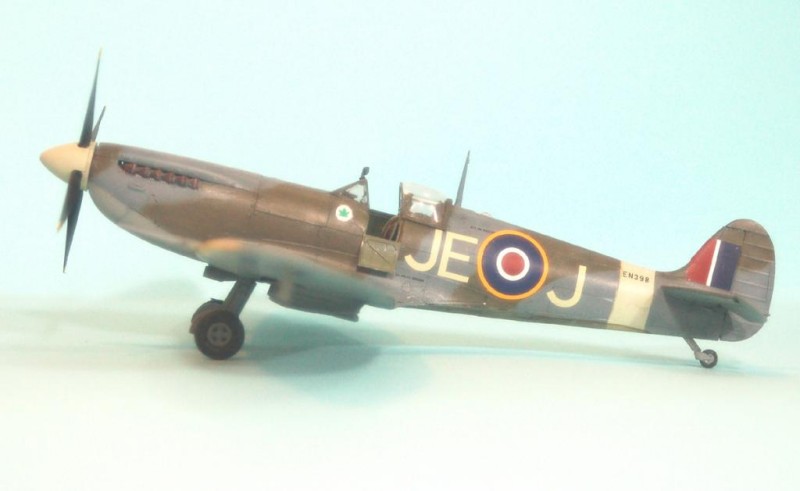


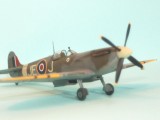
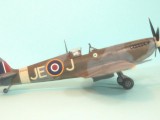

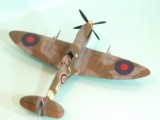
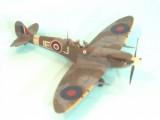

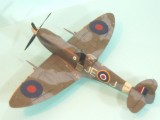

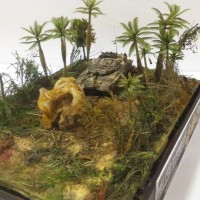
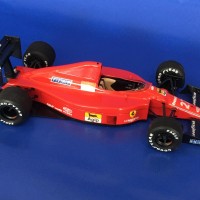
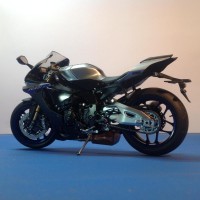

These Eduard kits have a nice touch but as you say over-engineered in some respects. A club member just brought in an Eduard Weekend Edition Hellcat, which looked great and was dead cheap, so bargain-modelling all round.
If ever asked, I would say that I don't have a particular interest in Spitfires, for the simple reason they're so popular and that exhibition tables are (literally) over-populated with them. Then, I see a nicely turned out kit, with those iconic lines, and I find myself standing and staring at the build for ages.
You got me again...
Top of the (pops) Spiti ...
nice build im Like
im I now make a IXc Mk 210...
P.k
What TC does for our hobby is to write about people and their machines using plastic as a vehicle for providing a teachable moment. That is what really sets this model from being just plastic,glue and paint. The model represents blood,sweat and tears...people who where pulling G's,vomiting,over coming fear and pushing the human body to its limits. I agree that Johnnie Johnson's Spitfire has been done add nausea-um but, its the story about the pilot and his machine that casts new light on what it means to model just another Spitfire. Two thumbs up on what a writer can do for a model.
I've never met a Spitfire I didn't like.
I'm deeply upset by the rapid drop of your collection of old wine bottles that, I suppose, goes hand in hand with the drop of old wine bottle lead foil.
Apart from that I breath a sigh of relief that it doesn't seem to affect your skills in writing great articles.
You can find lead foil separate to wine bottle seals, but naturally the wine bit of it has to be set aside. Decisions decisions...
Great write-up, Tom, I'm interested in how you get that overall soft focus look in your pictures.
Very nice as always.
An iconic plane built to your usual high standards Tom.
Well done sir.
Very nice job!